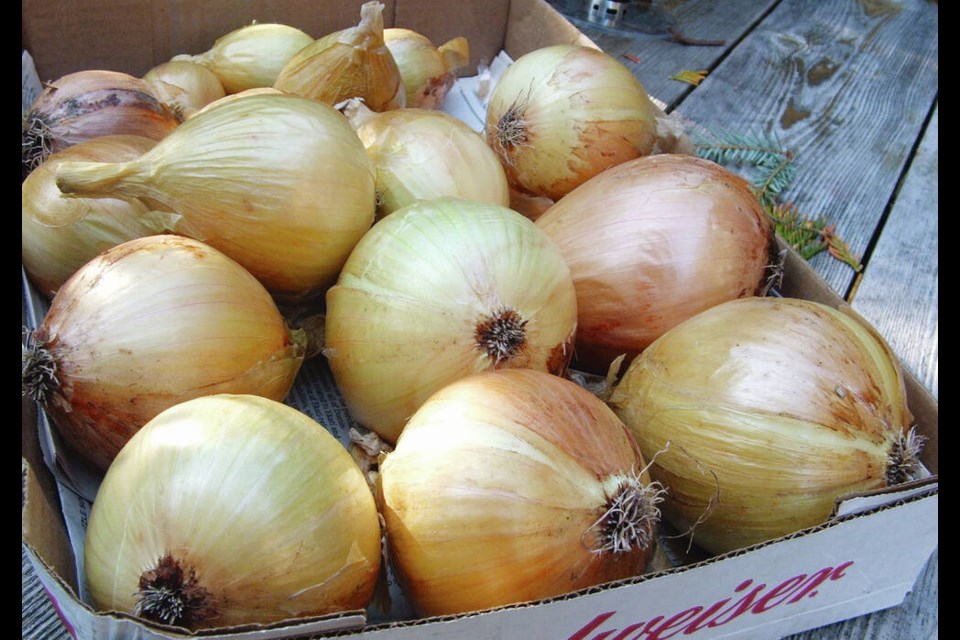Dear Helen: Is it too late to plant garlic, and is it all right to plant in the same place in consecutive years? I also have flower bulbs yet to plant.
C.B.
You are not alone. Home gardeners I’ve spoken with have been lamenting over plantings yet to be done. I think the problem this year was the weather through most of October. Temperatures remained too warm and soils, from a lack of rain since around mid-July, were too dry for planting. By the time the weather had cooled and rains had dampened garden plots, garlic planting had somehow vanished from the current “to-do” list of gardening projects. I have my own collection of bulbs-in-waiting.
No, it is not too late to plant garlic and spring-flowering bulbs, but do it soon, before winter and freezing temperatures set in.
About planting garlic in the same place in consecutive years, I have heard of garlic growers using the same space from year to year, with success; however, I avoid this practice.
In some situations it may work, but over the years I’ve planted garlic in the same space as in the previous year only once. That second planting in the same site was heavily afflicted with rust — the only time I’ve ever had rust in my garlic plants.
Dear Helen: Because I grew up in South Africa and am very familiar with the small, round squashes called Gem that are commonly grown there, I was interested in your mentioning them in an earlier column. Were you able to acquire seeds, and did you manage to produce some of the little squashes?
H.G.
I did, and was more than happy to find and grow the seeds again. I used to grow Gem almost every year, before all the seed sources for them dried up. I found the seeds listed again by chance, as I was searching for something else entirely. It was listed in the online catalogue from Twining Vine Garden in Fanny Bay. A very interesting source, with many unusual listings.
Gem can be used as both a summer and a winter squash, but I let all the little fruits mature for a late harvest, when the skins are well hardened for good storage and the flesh has turned a rich orange. I’ve already cut open and consumed one of them.
Dear Helen: I am wondering why my onions were smaller this year than they usually are. I planted and cared for the onions in the same way I’ve always done.
B.T.
Planting late and overcrowding of the developing plants are common reasons for onion bulbs failing to size up nicely. Onions are known to be “greedy feeders” requiring a fertile, humus-rich, consistently well dampened soil.
Since your growing conditions have produced larger onions in the past, and many gardeners have complained about a diminished size in their onion bulbs this year, you can probably attribute the disappointment to the dismally cold and wet conditions through the spring, when bulb onion plantings are usually developing rapidly. This year, that crucial growth was stalled by the weather.
The development of strong, substantial foliage in bulb onions through the spring is needed to produce onion bulbs of a satisfactory size.
One of the first indoor seedings I make each year is onions — usually in February, for transplanting as early as conditions permit in late March or early April, to give as much time as possible for the plants to develop an abundance of foliage during the lead-up to the longest day, the summer solstice in late June.
After the solstice, as days begin to diminish in length, onions go into the bulb formation phase. The larger and stronger the onion foliage is at that point, the larger will be the bulbs.
GARDEN EVENT
Bonsai demonstration. Dinter Nursery, 2205 Phipps Rd. in Duncan, is presenting a free bonsai demonstration on Saturday, Nov. 19, from 10 a.m. and 12 p.m., for bonsai enthusiasts looking for tips on a project or anyone interested in starting a piece of living art. A bonsai expert will give a short talk on this ancient art, describe what to look for when selecting a specimen, and demonstrate styling. Bring your specimens and questions. No registration is required. Dress to keep warm for the workshop, which will take place in an unheated greenhouse. dinternursery.ca



